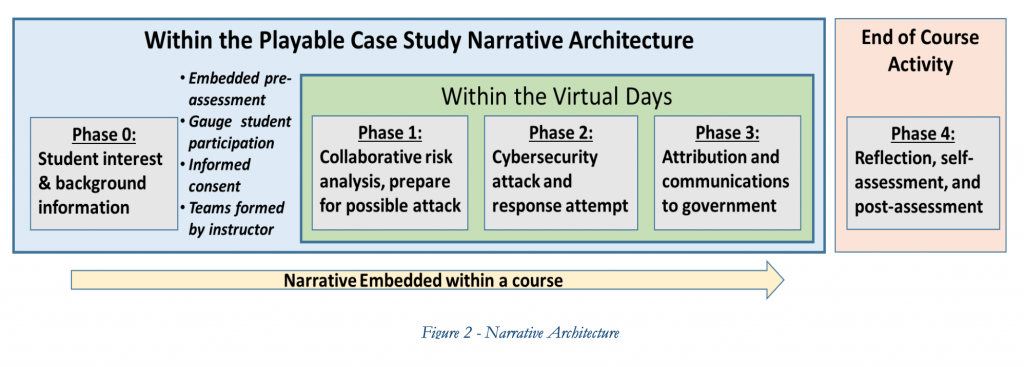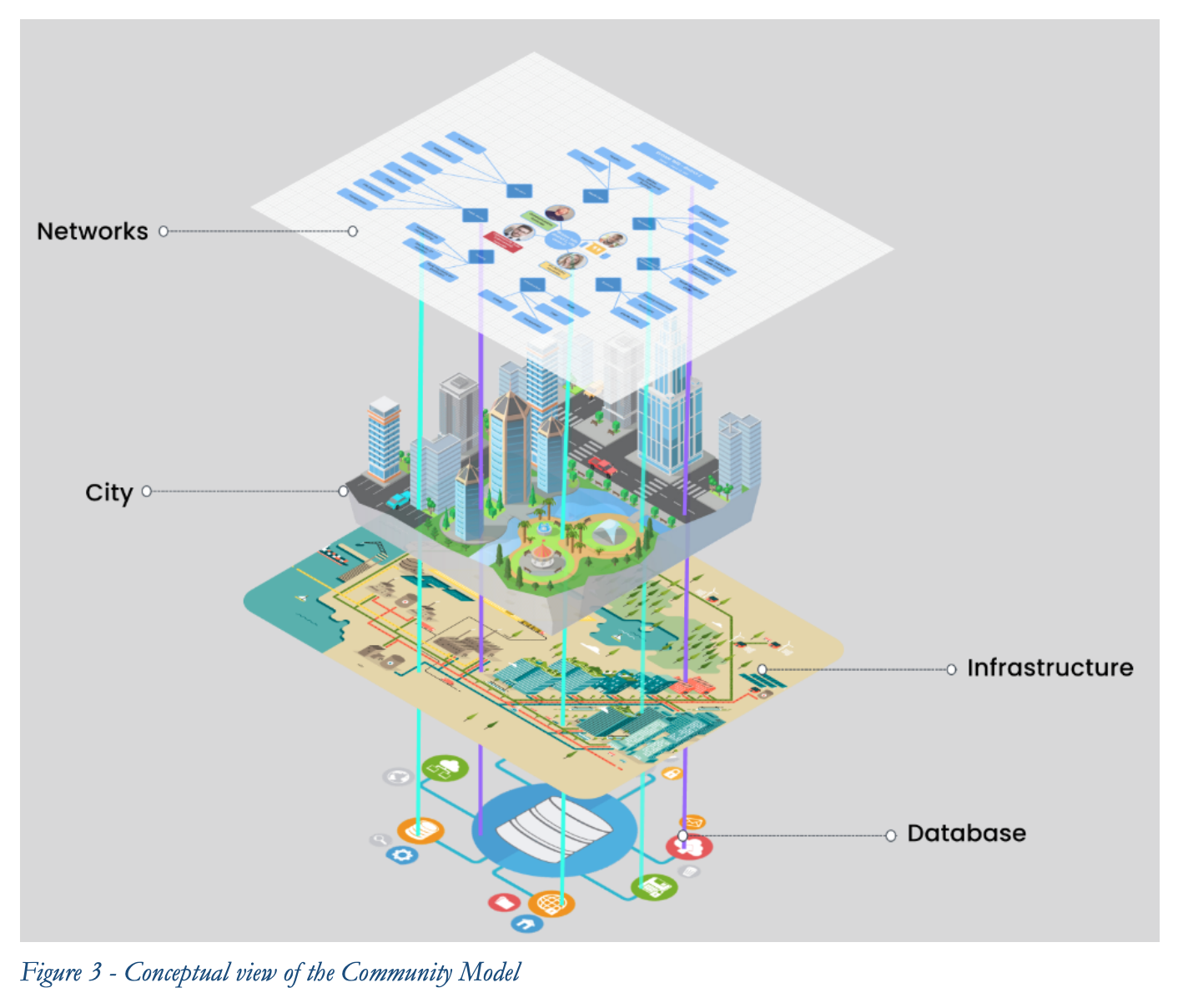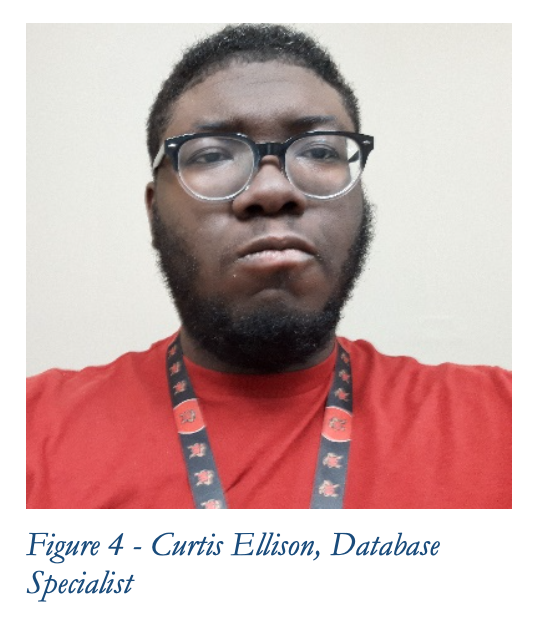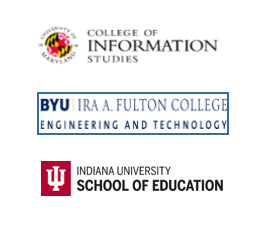The Community Model: Supporting Multiple Narratives
One of the key features of this project’s design is its focus on a community as the domain for the science, technology, engineering, and mathematics (STEM) activities that students are learning about. This community-scale STEM focus that the project proposed in 2018 is an area of developing interest and understanding. The original idea was that STEM professionals often work as parts of teams to solve real-world problems and that this way of seeing STEM careers might help develop an interest in this type of career with students, especially those who come from under-resourced communities and are first-generation college students.

This community model is similar to a digital play town with various entities, relationships, and infrastructures. For this project, the name Bronze Falls is used. It was the name of a fictional town used in a final class project at the iSchool and is a spinoff of the name Silver Spring that the project students lived near. Many of these elements would be used by both narratives relating to cybersecurity and disaster response the project is developing to teach STEM teamwork awareness. There are some differences in the ways the two narratives are designed and different parts the community model manifests as the game board for the student experience. In thinking of it and developing it as a distinct element, the Maryland team that is taking the lead in developing this component is considering the potential reuse of this kind of community model for other kinds of projects.
One of the questions the team first encountered with this work was determining the correct scale for the model. Would we consider a community to be 1,000 people, 10,000, or more? What kinds of entities would be in it and what relationships between them would be put into the model? The decision was made to create a fictional community that was on the scale of a small city geographically and to include within it a representation of different kinds of entities from commercial, industrial, community services, etc. that can support the different narrative developments.
A Multi-phase Cybersecurity Narrative Emerges
The initial design work on the first narrative version has produced a multi-phase design where students have an initial engagement with the narrative and are introduced to the idea of the fictional community and organization. Students are presented with information on jobs and asked to provide a self-assessment that will be used as an exercise in expansive framing as well as an assessment to determine their player roles in-game. This five-phase model takes the students through an evolution from being initiates into a new organization with little understanding of the different roles that professionals working in the cybersecurity field to experiencing a cybersecurity attack where they can take active roles in supporting their organization and community.

Phase Zero: Career Awareness Pre-Survey, Intros to Various Careers, Role Assignments-DT/EB
This phase entails an introduction to the simulation, including a fictional Junior Associate Professional Development Program. It provides students an introduction to navigating the communications modes and ‘story sequence’ in the PCS interface. It will present students with opportunities to bring their own knowledge in expansively-framed, open-ended questions. There is a time gap after Phase Zero before the actual narrative clock begins to allow instructors to make role and teaming assignments. While the student’s information provided in Phase Zero will be a factor in role assignments, it will be necessary to make sure all roles are covered in teams and that teams are made according to the instructor’s direction as some instructors like to assign teams based on heterogeneity or student preference. Phase Zero provides an opportunity for the PCS to collect both career awareness pre-assessments and to collect information about role preferences.
Phase 1: Risk Assessment / Resource Allocation
In this phase, players receive tasks from the City Council or Chief Information Officer to conduct a risk assessment activity and allocate resources for tools to prevent an attack. The resources vary by role and each player is allocated a certain amount of budget to use to either purchase information tools for themselves or to share their funds with teammates. Each player has a different information tool that they can purchase in one of three increasing levels of capability and cost. The extent to which students make a joint decision on how to spend their budget is one area that collaboration can be seen in Phase 1. After communicating with each other and making spending decisions, the student’s choices are evaluated by a fictional Cyber Insurance “Expert.” This expert is one of several non-player characters (NPCs) in the game that communicates with students. This step allows for formative assessment and revision/reflection by students.
Phase 2: Attacks, Incident Response / Recovery
During this phase, the student teams will respond to attacks against the fictional city of Bronze Falls. They will need to work together in Phase 2 to isolate the problem and apply their plans. It is possible that more than one attack will occur and as students respond to one attack, another attack will develop as is consistent with several high-profile municipal events researched for the project. Depending on how effective their plan was, students may eventually contain all the security threats (with help/scaffolding from experts, since they will likely not be able to solve all attack issues and the goal is to have the students gain some exposure/experience). Whether successful, or not, the team’s experience in Phase 2 is intended to demonstrate to students the importance of collaborating and sharing role-specific information.
Phase 3: Attribution, Communication with Policy-makers and Public
This phase involves having students learn about various malware/cyber-threat repositories, different hacker group attack signatures, how other cities have responded to cyber threats, what is covered in their insurance packages, and how to present the situation to the public. Once the attack is contained, students launch an investigation into the source(s) of the attack and the way it reached the city. Students write a report to the city council detailing what went wrong and how to improve security plans for the future. They may also prepare a final press release for the city.
Phase 4: Reflection and Post-assessment
The fourth phase is taken out of the context and the narrative. It is done individually with each student reflecting on their experience in the game and allowing an assessment of how the game experience has influenced their understanding of STEM careers and intentions to explore that career path. This phase is the one that we believe will have the largest impact on grades. Students will be able to fail in the game, but succeed in the course through a well done reflection of the game experience.
This narrative design provides several opportunities to assess collaboration between the students and represent that collaboration in the learning analytics system. Collaboration for the purposes of this project is comprised of communication and coordination (in moves). Communication primarily takes the form of in-game messages, and coordination primarily takes the form of moves that players make with resources under their control that are in the service of their various role-based incentives.
Visualizing a Sociotechnical Community
One of the challenges the team began to look at was how to visually represent the fictional community of Bronze Falls. There are ways to visualize aspects of a community such as for land-use or using geographic information systems (GIS). However, those tools are typically for particular purposes not designed for games, and generally lack the ability to show the combination of socio-technical elements this project calls for.

The team has been experimenting with a variety of ways to represent the different elements and relationships in the community model. One of the important elements that could be used for both the cybersecurity and disaster response modules is a layer called “infrastructure” that connects different parts of the city/community that could be vulnerable in various kinds of narrative scenarios.
Developing a Technical Architecture for the Community Model
While at first glance it resembles in some ways a play town similar to the ones kids and model railroad aficionados may build, the community model for this project is a technological construction with a number of different types of elements that can be used directly by the PCS as it renders the narrative to the players. Part of what the project began working on in this time period is the technology that would support the community model, including both the data architecture to store information about model elements as well as some of the visualization options that would show the model to the players.
Team Spotlight: Curtis Ellison, Database Specialist
Our team is fortunate to have a number of talented students working on it. One of the most valuable members of our team is graduating senior Curtis Ellison. Curtis is responsible for the database design and engineering in our cloud environment as part of the Learning Analytics team. This MySQL database is at the core of our analytics process and all updates to the design pass through Curtis who also is involved with the REpresentational State Transfer (REST) Application Programming Interface (API) that is the method that the PCS technology will use to communicate with the Learning Analytics platform. Curtis was also a key member of the Games Research Team that in the fall of 2019 explored features in different digital games to understand different design options for the project.

Careers In Play Leadership Team
Phil Piety, PhD. University of Maryland iSchool (PI and Learning Analytics). ppiety@umd.edu
Beth Bonsignore PhD. University of Maryland iSchool (Co-PI and Design-based Research), ebonsign@umd.edu
Derek Hansen, PhD.Brigham Young University (Co-PI and Game Technology). dlhansen@byu.edu
Dan Hickey, PhD. Indiana University School of Education (Co-PI, Learning Theory and Assessments). dthickey@umd.edu
